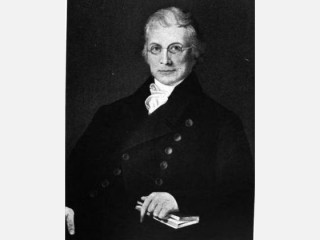
Alexander Brown biography
Date of birth : -
Date of death : -
Birthplace : Baltimore, Maryland
Nationality : American
Category : Famous Figures
Last modified : 2010-11-17
Credited as : Banker and merchant, one of America's first millionaires,
The merchant and banker Alexander Brown (1764-1834) became one of America's first millionaires. He was a leading promoter of the city of Baltimore.
Alexander Brown was born and raised in Ireland, where he established himself as a linen merchant in Belfast. In 1800 he, his wife, and his sons emigrated to Baltimore, Md. He brought with him not only his stock of goods, but, evidently, a considerable amount of capital and advantageous connections with family members in business in England.
Brown's mercantile interests developed rapidly. One source reports that he obtained a monopoly of the linen trade in the Baltimore area. From an importer of foreign goods, Alexander Brown and Sons became an exporter of cotton and tobacco, a major shipper commanding a fleet of sailing vessels, and a commission brokerage and banking establishment with agents in all the major Southern ports.
Continuous growth was achieved despite the hazards of business in a developing country, the danger to shipping during the War of 1812, and economic panics, like that of 1819. Native caution, substantial capital, and a policy of strategic expansion seem to account for Brown's spectacular success. In 1810 he established a Liverpool branch of the business under his eldest son, William (later Sir William Brown). The English office, through which American remittances, credit instruments, and securities flowed, enabled the firm to take a large role in international trade and finance. In 1818 a Philadelphia office was opened by another son, John, and in 1825 a New York branch under still another son, James. Both of these firms were to continue in operation for more than a century under the name of Brown Brothers and Company.
In addition to his private banking concerns, Alexander Brown was a leading advocate of the Second Bank of the United States. He himself owned a large block of its stock, and he sold more to other buyers. Brown led the fight against the Bank's first officers, who were speculating in its stock, and helped to gain the appointment of more reliable businessmen to its board. He was a director of the Mechanics Bank of Baltimore and of the Baltimore branch of the Bank of the United States.
Brown and his son George were among the principal architects and persistent supporters of the Baltimore and Ohio Railroad, the first significant railroad line in America. It had been undertaken to maintain Baltimore's competitive advantage in an era when New York City had acquired the Erie Canal, and Philadelphia the Susquehanna Canal, to link them with markets in the West. By the mid-1820s the Browns were clearly Baltimore's most prominent capitalists.
From his first years in the city, Alexander Brown had also taken an active role in civic life. In 1804 he had helped organize a municipal waterworks; in 1825 he was one of the incorporators of the Maryland Institute of Art. In 1834, the year of his death, his credit helped save Baltimore's Bank of Maryland.
Brown was one of America's very few millionaires in the antebellum period, leaving a personal fortune estimated at more than $2 million. After his death the mercantile aspects of his business were gradually diminished, and the companies he had founded became exclusively banking concerns.
Most of the sources for Brown's life are privately printed company histories, such as Frank R. Kent, The Story of Alexander Brown and Sons (1925). Bray Hammond, Banks and Politics in America: From the Revolution to the Civil War (1957), is recommended for general historical background. See also John Crosby Brown, A Hundred Years of Merchant Banking (1909).
















